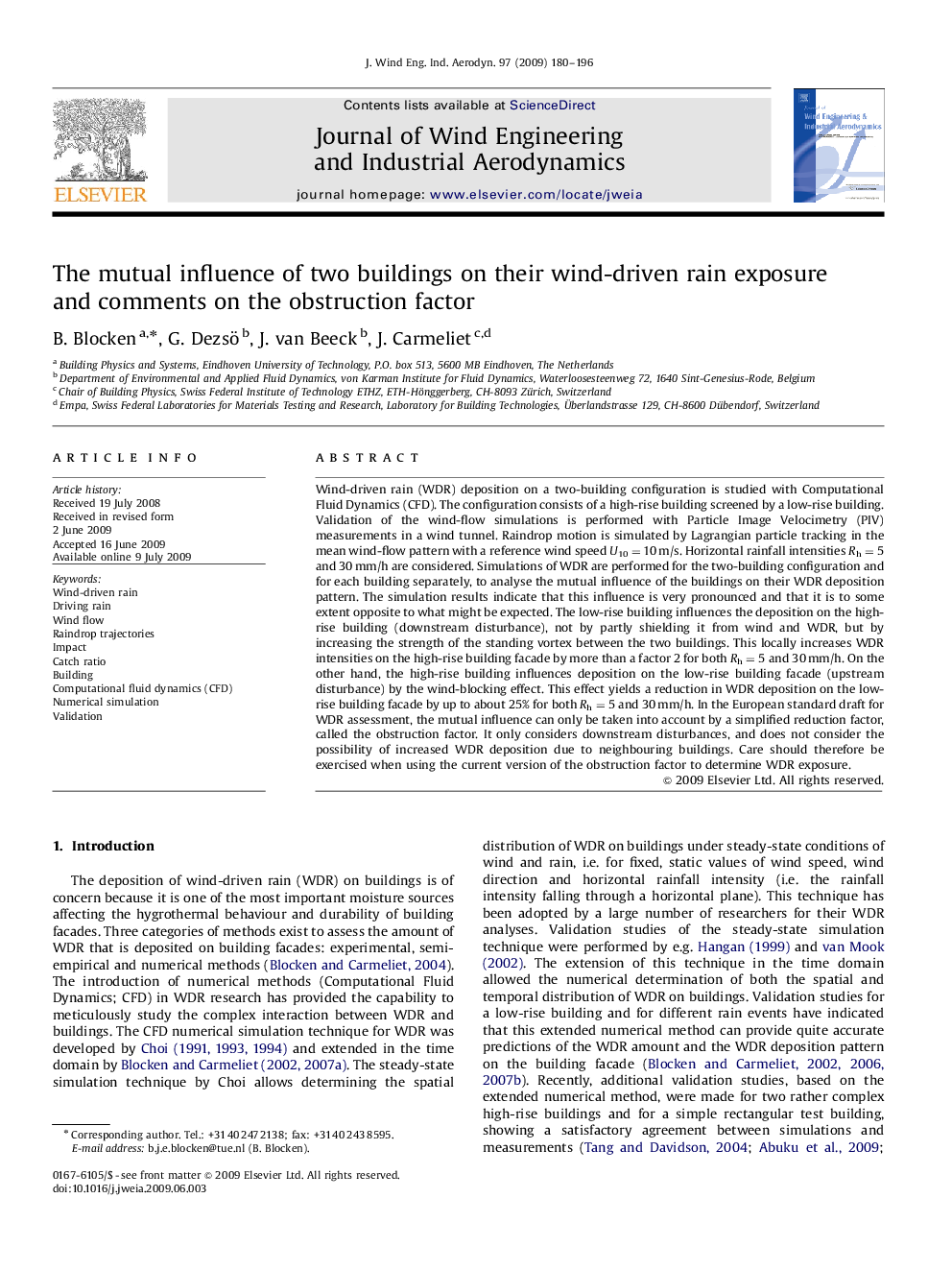| کد مقاله | کد نشریه | سال انتشار | مقاله انگلیسی | نسخه تمام متن |
|---|---|---|---|---|
| 293803 | 511192 | 2009 | 17 صفحه PDF | دانلود رایگان |

Wind-driven rain (WDR) deposition on a two-building configuration is studied with Computational Fluid Dynamics (CFD). The configuration consists of a high-rise building screened by a low-rise building. Validation of the wind-flow simulations is performed with Particle Image Velocimetry (PIV) measurements in a wind tunnel. Raindrop motion is simulated by Lagrangian particle tracking in the mean wind-flow pattern with a reference wind speed U10=10 m/s. Horizontal rainfall intensities Rh=5 and 30 mm/h are considered. Simulations of WDR are performed for the two-building configuration and for each building separately, to analyse the mutual influence of the buildings on their WDR deposition pattern. The simulation results indicate that this influence is very pronounced and that it is to some extent opposite to what might be expected. The low-rise building influences the deposition on the high-rise building (downstream disturbance), not by partly shielding it from wind and WDR, but by increasing the strength of the standing vortex between the two buildings. This locally increases WDR intensities on the high-rise building facade by more than a factor 2 for both Rh=5 and 30 mm/h. On the other hand, the high-rise building influences deposition on the low-rise building facade (upstream disturbance) by the wind-blocking effect. This effect yields a reduction in WDR deposition on the low-rise building facade by up to about 25% for both Rh=5 and 30 mm/h. In the European standard draft for WDR assessment, the mutual influence can only be taken into account by a simplified reduction factor, called the obstruction factor. It only considers downstream disturbances, and does not consider the possibility of increased WDR deposition due to neighbouring buildings. Care should therefore be exercised when using the current version of the obstruction factor to determine WDR exposure.
Journal: Journal of Wind Engineering and Industrial Aerodynamics - Volume 97, Issues 5–6, August 2009, Pages 180–196